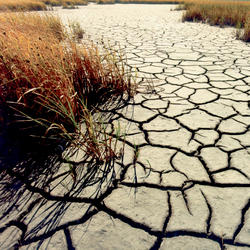Drought
Drought
Featured Project
Estimating the Future Effects of Forest Disturbance on Snow Water Resources in a Changing Environment
Estimating the Future Effects of Forest Disturbance on Snow Water Resources in a Changing Environment
Droughts of the future will be hotter, longer-lasting, and larger than droughts of the past. CASC-supported scientists are working to understand how changing drought conditions will impact important natural resources. Learn more about this work below.
Filter Total Items: 134
Developing science syntheses to facilitate climate-informed land management decisions and NEPA analyses on rangelands in the sagebrush biome
The National Environmental Policy Act (NEPA) requires federal public land managers to assess potential environmental impacts of proposed actions. The USGS, Bureau of Land Management, US Fish and Wildlife Service, Colorado State University, and North Central Climate Adaptation Science Center are working together to develop science syntheses that can facilitate considerations of climate change in...
An Action Plan for Cultural Resource Climate Adaptation Research and Funding
The Gulf of Mexico coast of Louisiana and Texas faces threats from increasingly destructive extreme weather, heat, subsidence, and coastal erosion. Inland areas also face stronger storms, floods, and shifts in land development patterns. Increasing drought and extreme heat in Texas and New Mexico also exacerbate fires and floods. All of these regions are culturally rich, rapidly changing areas wher
Assessing the Impacts of Rangeland Restoration on Carbon Sequestration and Co-Benefits for Drought Resilience in the Sagebrush Steppe and Mixed Grass Prairie
Invasions of exotic annual grasses (EAGs like cheatgrass have caused major losses of native shrubs and grasses in western U.S. rangelands. They also decrease the productivity and carbon storage in these ecosystems, which is expected to create dryer soils that may cause further losses in plant productivity. This cycle is the hallmark of desertification – or, fertile lands turning into deserts. Ma
Developing High-Resolution Soil Moisture Projections for the Contiguous U.S.
Ecological drought impacts ecosystems across the U.S. that support a wide array of economic activity and ecosystem services. Managing drought-vulnerable natural resources is a growing challenge for federal, state and Tribal land managers. Plant communities and animal populations are strongly linked to patterns of drought and soil moisture availability. As a result, ecosystems may be heavily alte
How Do Critical Life History Stages Limit Plant Adaptation to Changing Climate? The Role of Seedling and Sapling Survivorship in Ecosystem Resilience
Ecosystems respond to disturbances (such as wildfire) and changing climate in a variety of ways, including persistence, recovery, and reorganization into new combinations. Some species respond by migrating across the landscape over time, which allows them to keep up with changing climate. Many forests recover after wildfire by regenerating from seeds, and public land managers often assist these pr
Improving Predictive Drought Models with Sensitivity Analysis
Drought is a common consequence of climate variability in the south-central U.S., but they are expected to occur more often and become more intense with climate change. Natural resource managers can improve their planning efforts with advance warnings of impending drought. Using input from resource managers in the Chickasaw Nation, this research team previously created models that forecast drought
Modeling Large Fires in Response to Potential Tipping Points in Fuel Dryness
Wildfire burn areas are increasing in the western U.S., a change that has been linked to increased fuel aridity caused by climate change. Recognizing that there will likely be even more large fires in the future presents an opportunity to prepare and adapt to the expected climatic changes. This project addresses three key science questions: 1) Is there a specific level (threshold) of fuel aridi
Synthesizing the Responses and Vulnerabilities of Freshwater Invertebrates to Droughts and Heavy Precipitation in the Midwest
The Midwest United States is facing wetter winters and springs and more variable precipitation in the summer and fall. Heavy floods and prolonged droughts are costly to agriculture, housing, transportation infrastructure, and recreational opportunities across the region. These extremes also stress the health of freshwater ecosystems that are important to the regional economy and quality of life. T
“Climate-Smart” Fisheries and Aquaculture to Support Resilient Aquatic Ecosystems in Vietnam
The Vietnamese government has committed to climate mitigation and adaptation in support of the Paris Agreement. Implementation of Vietnam’s Nationally Determined Contribution (NDC) to adaptation involves a greater focus on the Mekong River Delta, which is poised to be impacted by sea level rise. Saline intrusion from sea level rise and droughts can affect aquatic ecosystems and the services they p
Advancing Climate Change Adaptation Strategies for High Elevation and Endangered Lowland Coquí Frogs in the U.S. Caribbean
Amphibians in the US Caribbean, like the well-known coquí frog, are particularly vulnerable to human-caused climate change. Coquí frogs are represented by 17 species across Puerto Rico and US Virgin Islands and include several mountainous and coastal species that are threatened by extreme heat and drying, loss of coastal freshwater marshes through saltwater intrusion, or both. Over the past decade
California Reforestation Management Toolshed: A Web-Based Dashboard of Integrating Existing Resources
Millions of acres of California’s forest cover have been lost due to severe wildfire and drought mediatedinsect outbreaks. These acres may not grow back as forests without management action, which could negatively impact carbon sequestration, access to clean drinking water, wildlife habitat and recreation opportunities. Various factors, including limited regeneration potential, hotter and more ext
Developing and Testing a Drought Early Warning Product in the South-Central United States
Drought is a common result of climate variability in the south-central United States. With increasing temperatures and more variable precipitation patterns expected in the future, drought will continue to stress water quantity and quality in this region. University of Oklahoma researchers have demonstrated that the Palmer Drought Severity Index (PDSI), a measure of long-term drought conditions, ca
















